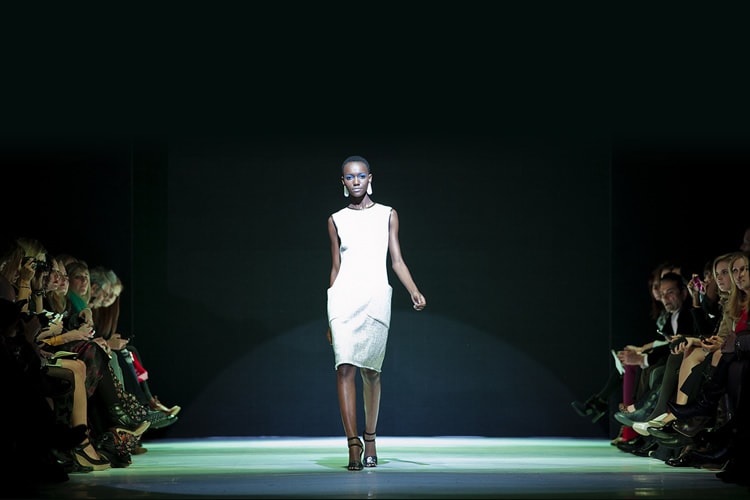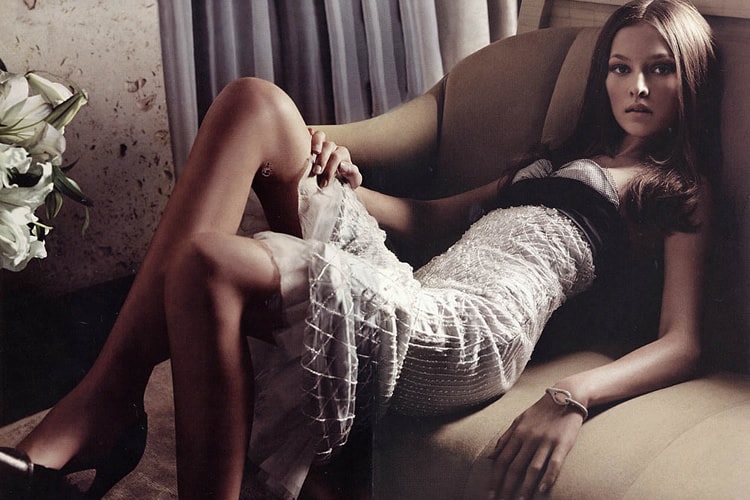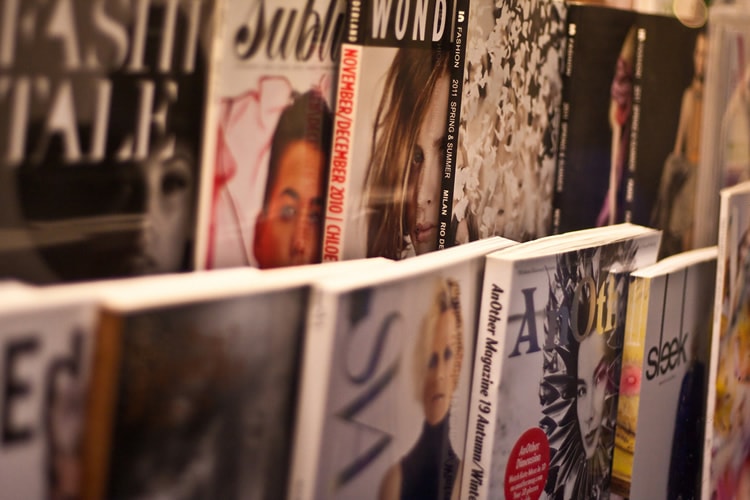On Beginning Fashion Photography
Fashion photographers are able to fulfil many different types of work, from photographing ads to taking portraits to shooting magazine covers.
Many aspects of fashion photography are prevalent in many more photographic situations such as in shooting weddings and in commercial and product photography, so developing more experience in fashion photography will benefit many other possible areas of interests too. However, if you’re working as a fashion photographer, you must be incredibly meticulous in your work, and you need to plan and be properly prepared before you can start taking any photos.

photo by DARREN ST0NE
Making Connections with Models and Stylists
Working in fashion photography means working with people, and in a very personal and engaged manner at that. The model in a fashion shoot plays just as big of a role as the photographer. The model you work with is the focal point of your picture, and above all else she or he is the one thing that can make or break your photo. The first step is sometimes the hardest step, and that is actually acquiring a model to work with, or just someone who is willing to pose for you who then is basically a model in the same way anyone who uses a camera is a photographer.
But again, finding someone who can work well with your style, your theme, and your schedule, which is the hardest aspect of most shoots to plan, can be difficult and time-consuming. To make things easier, photographers, models, and also even stylists, who also make up an extremely large component in a fashion shot, need to maintain their connections with each other, especially if they do find other artists whose styles work well with their own.
This is one of the reasons why ensuring that the person you’re working with has a pleasant and anxiety-free experience is extremely important, another being that your models need to be in an environment they can work comfortably in in order to look and perform at their best.
Facebook is a good resource to start with in a search for a model or stylist. There are many groups on Facebook dedicated to this sort of thing where you could just post open-ended requests or statuses looking for certain persons to be featured in your work. But Facebook really shouldn’t be the only thing you rely on, and it might get annoying for your Facebook friends or “peers” to constantly have to see or get notifications from you.

photo by duke9042004
If you’re going to be constantly working in fashion photography or any photography subject that requires human subjects, you should find create an account on a website called ModelMayhem, which connects every possible worker you could need or find in the fashion industry, especially in finding models and stylists. There, you can connect with local members or check out other artists anywhere in the world and see examples of their works and information about themselves. Free accounts allow you to upload fifteen images of your work and they also messages to five different individuals every twenty-four hours, while premium accounts offer unlimited and extended features suitable for those who may need to work with models professionally on a regular basis.
Ensuring the Best Experience for Everyone Involved
Once you’ve found your models and before you’ve started working with them, it would be best for both or all involved if you asked them to sign an agreed-upon contract that would include copyright, sales, and release and publication details. You can find many templates and pre-made forms online that you can either customize or directly print out and give them. As an example, have a look at 500px‘s simple but very effective and contract.

photo by fervent-adepte-de-la-mode
Again, all this applies to finding and working with stylists too. You should agree upon compensation and credit details, and have proper documentation proving these agreements before beginning to work with them. As the photographer, you’ll probably be providing everyone with access to digital copies of the finished images, whether the files themselves or access to where they can view the pictures, so since you need to contact your stylists and models again, you need to have a sure form of reliable communication with them.
They may even be willing to work with you again if any opportunities come up in the future, and when you have a network of connections you’re familiar with, finding partners to help with your projects is easy, plus you already know you work well with them.
While stylists, once given some direction, guidelines, or instructions, will for the most part be able to do their work on their own without much need for your input, the working relationship between a model and photographer is much more interdependent and involved. For models to be able to emote and express themselves properly, you need to ensure that both you and the environment you’re working in are professional but personable.
Models that are more experienced may be able to make up for miscommunications between themselves and the photographer, but if you’re giving directions that are unclear and confusing or just in general being difficult to work with, you won’t end up with the best possible photos you can have because it would be impossible for the models to work at their best.

photo by fervent-adepte-de-la-mode
Preparing Your Equipment and Studio
Before being able to work with and direct a model in the studio, you should have and know how to use the appropriate accessories for your camera. Investing in a professional strobe flash is an absolute necessity; you will need to use the strobe flash so that subject in your photo can be highlighted and glamorized by the light, which will allow you to shoot photos that pop like you see in magazine covers.
The flash built within your camera body isn’t powerful or functional enough to perform adequately in professional photography, and with an external strobe flash, you will be able to bounce or reflect the flash off of different surfaces, such as the ceiling or wall, onto your subjects. If you don’t bounce the flash and it instead goes off directly onto your subjects, they will be put in a very harsh light, and it will be obvious that the flash was used, and your photos might look more like amateur candids rather than professional and refined.
Some strobe flashes can be fired remotely off-camera, which provides you with a wide flexibility of lighting options and provides you with far more ways to bounce the flash than usual.

photo by Julio Aguiar
Finding that perfect perspective and angle can definitely be tricky in fashion photography, so in many situations it’s probably easier to shoot your camera handheld rather than with a tripod, but tripods are still necessary products to invest in. Tripods provide total stabilization and precision; they can make the compositions and perspectives of your photos consistent whereas if you were just holding your camera, every picture would be be slightly different in terms of perspective and placement, which can make your photos look amateurish if the compositions were supposed to look consistent.
Tripods also allow for maximum depth-of-field and sharpness, as you can lower the shutter speed and increase the aperture of your camera with a tripod. But be careful not to make the shutter speed so slow that the camera won’t be able to capture and freeze your model’s movements or expressions. Capturing the right expression and movement from your model is just as important as the technical aspects of the photoshoot, so use your judgement when deciding to use a tripod or not as tripods will severely limit your range-of-motion and flexibility. On a final note, to be more specific, you should purchase a ballhead tripod, which will allow you to rotate your camera on the tripod much more quickly and accurately than a regular tripod, though they are a quite a bit more expensive.

photo by Geoff Stearns
And if you have no access to an actual photo studio, you can still pull off a lot of work in fashion photography.
Outdoors and nature locations can offer gorgeous photoshoot opportunities, as well as different locations in the city and certain rooms and buildings too, all depending on the style and theme you’re looking for. For example, hotel rooms can make for some very visually striking settings for boudoir and fashion photos, or you can go to a street downtown in the evening to find a location for some film noir shots.
Even if you do require a white or plain colored background for your composition, there are plenty of ways of replicating a studio look without actually setting foot in a studio. You can purchase hand-painted backdrops that come in a variety of textures and styles, or you can buy a chroma-key backdrop which can act as a greenscreen. You can even just tape large pieces of white paper on the floors and walls in just your apartment or dorm, and with efficient and proper lighting and technical skill, the photos will look like they were taken in a professional studio setting.
Finding studio space or access can certainly be one of the most expensive aspects in photography, but with some DIY work and knowhow and creativity, it becomes much less of a hassle.
Finding Inspiration
The biggest and sometimes most difficult part to producing great fashion photos is finding the right source of inspiration first. Unless you’re being directed during the shoot, you, as the photographer, will need to have some conceptual and aesthetic ideas in mind before starting to take pictures.

photo by Garry Knight
Maybe you’ve picked out some burlesque outfits you’d like the models to wear to end up with titillating and provocative photos, or maybe you’d want to go shoot in a place in nature that’s on the verge of ruination to achieve a visceral but organic feel. If you’re inspired, you’ll have an end goal in mind when doing the shoot, and your photos will reflect this; without a clear focus or direction, your shots could end up all over the place.
You should have some steady and constant resources to draw inspiration from. These could be magazines or collages or collages made from magazines, or you could simply look online. There are myriads of fashion bloggers, photographers, and designers on Tumblr that you can follow and view and reblog, but if you want a dedicated website just for fashion and being inspired by fashion, you should go on Lookbook.nu, a community site where users can submit their own outfits and designs whilst rating and providing feedback on others’ posts.
On Lookbook, many of the users are very competent photographers and fashionistas alike, making it a very valuable resource for the fashion photographer needing inspiration.
Conclusion
Fashion photography is a very broad subject, and it covers a wide range of different and sometimes complex photographic techniques. You’ve learned how to find and work with models and stylists, what equipment to purchase and how to prepare your studio setting, and how to work with a clear direction and focus in mind. Along with this, proper lighting and staging techniques, along with the more technical aspects of using your camera are all extremely important in fashion photography, and these guides can be found in many other articles online and on Contrastly as well.
You should consult those articles after reading this post in order to garner a more comprehensive and technical understanding behind fashion photography. With all this information and guidelines in mind, you will be able to venture into fashion photography, one of the most elaborate and elegant arts, in a prepared, confident, and determined manner.
